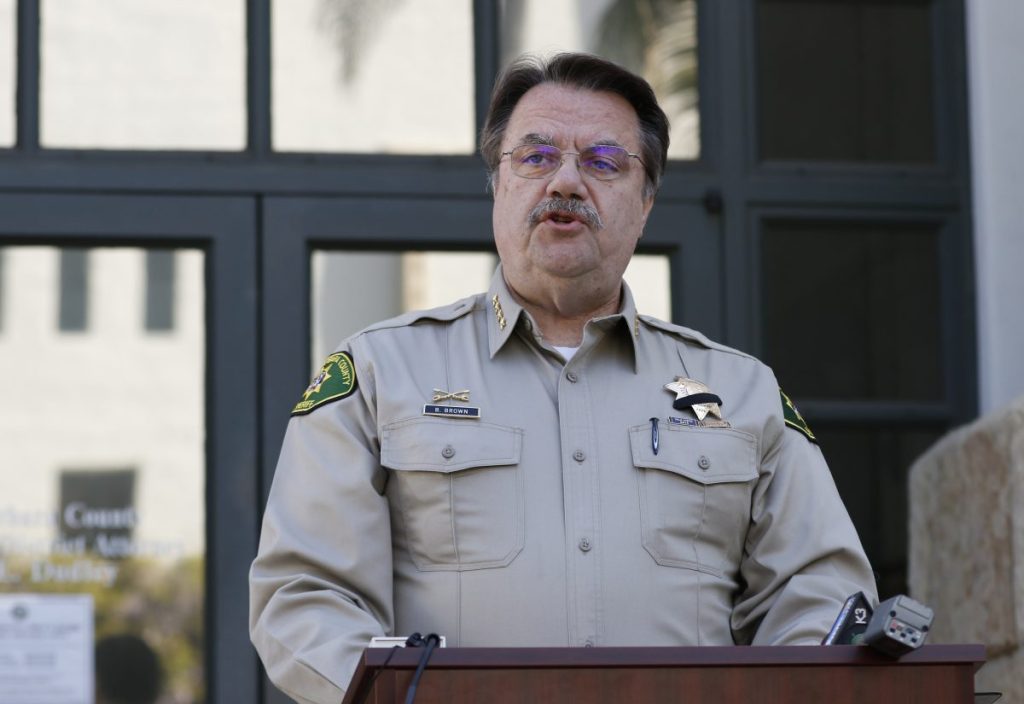During the latest TRUTH Act forum at the County Board of Supervisors last week, Sheriff Bill Brown reported that the number of undocumented individuals released from Santa Barbara County Jail and picked up by ICE for deportation dropped from 12 in 2020 to six last year. But while the number continues to drop, community advocates raise the debate over whether the collaboration between the two agencies should continue at all.
Sheriff Brown called the issue “fraught with political agenda and emotion on both sides,” but maintained that the few individuals whose release dates are reported to ICE were “career criminals” and “repeat offenders” with lengthy criminal histories, and that the county has to achieve a balance between protecting the rights of individuals and protecting the community as a whole.
“We are keenly aware that a vast majority of undocumented people in our county are hardworking community members,” Brown said. “We’re not interested in seeing fieldworkers, service workers, and others who may be undocumented and have no serious criminal history, facing deportation.”
The annual report came out of the TRUTH (Transparent Review of Unjust Transfers and Holds) and Values Acts of 2017-2018, and in the years since, the Sheriff’s Office has reported the number of inmates released and picked up or directly transferred to ICE in Santa Barbara County.
Whenever someone is booked into Santa Barbara County Jail, their fingerprints are sent to a U.S. Department of Justice database. Then, ICE can request information or notifications from the Sheriff’s Office. The county then decides whether the individual meets the criteria for their release date to be shared with ICE, who then arranges agents for a pickup.
In 2017, the county received 526 requests and ICE conducted pickups of 351 inmates. Since then the number has dropped steadily to 98 pickups in 2018, 38 pickups in 2019, then a dozen in 2020. In those years, especially during the two years of the pandemic, the number of inmates processed for release also dropped dramatically, from over 15,000 in 2017 to 6,479 last year.
Those who want the collaboration to continue say that the low number of pickups and the fact that many of the inmates reported are violent offenders are proof that the TRUTH Act is forcing accountability in the process. But during a lengthy public comment, over 20 members of the community — including advocates and attorneys from local immigrants rights groups — pushed for an end to the ICE pickups altogether.
There was also confusion over what differentiates an ICE “pickup” or “transfer.” While the county reported zero “transfers,” several of the supervisors and county residents questioned the pickup process. According to Sheriff Brown, the jail previously released inmates into the main lobby and ICE agents would be waiting outside in the public parking lot.
Now, due to “altercations, confrontations, and foot pursuits,” ICE agents are notified of the exact date and time of the release and are allowed in the facility’s backdoor; the undocumented individual is then let out through a back door exit, “and ICE is waiting there,” Brown said.
Frank Rodriguez, a community advocate with CAUSE and 805 Immigrant, said that the TRUTH and Values Acts were steps toward the state stopping “the violence of separating families via deportation through ICE.”
Rodriguez said his own family knows that pain well, and his uncle was among those recently deported through Santa Barbara County Jail. He likened being picked up by ICE agents from the backdoor exit of the jail to “double jeopardy,” since those released from county jail have already served their prescribed sentence.
“The same way as any other individual who leaves our county jail and paid their time, “ he said, “we should be building towards them being part of our community again.”
He urged the local agencies to follow other California counties, like Los Angeles County, in ending the “voluntary collaboration with ICE.” Until then, he is pushing for more transparency in the process. Currently, community organizations are only informed when there is an annual forum, he said, and even in those cases, the public outreach is minimal.
While there was no action to be taken at the meeting, Sheriff Brown said this was likely not the end of the talks on the issue. “The reality is, we’re gonna be here having this conversation again and again,” he said, putting pressure on the government to address the “convoluted, difficult” situation “until the federal government steps up and really does what it needs to do and achieve a bipartisan approach to comprehensive immigration reform.”
Support the Santa Barbara Independent through a long-term or a single contribution.

